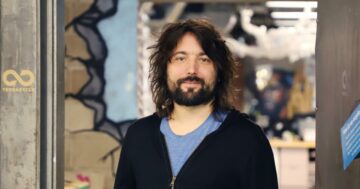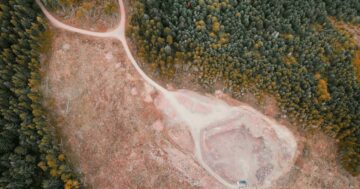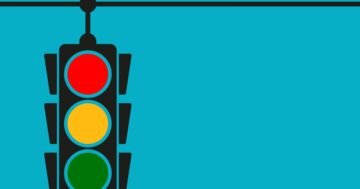
This article originally appeared on Circulate News.
When you think of design, what images come to your mind? If you recently visited a design museum, you might think of a beautiful chair, a resourceful backpack or a futuristic-looking car. Most likely you think predominantly of tangible objects. With a little luck, or for example, assuming you are familiar with the concept of a circular economy, your idea of design might also include services, such as leasing schemes or a maintenance contract. Over the past decades though, industrial design has been expanding to incorporate ever-wider scopes, such as organizations and neighborhoods. This evolution occurred because designers sought to apply their skills to increasingly complex problems, such as environmental degradation and poverty, which typically require a systemic approach. So does achieving a circular economy, be it within a city, a country, or globally. The wide range of skills and methods designers have today can therefore contribute significantly to this endeavor.
Looking for the seed of designers’ interest in wider societal problems, one quickly comes across the work of Victor Papanek, an Austrian-American designer. In 1971, he wrote his seminal book, “Design for the Real World” in which he exposed the environmental impact of design. “There are professions more harmful than industrial design, but only a few of them,” he says in the opening line. “And possibly only one profession is phonier. Advertising design, in persuading people to buy things they don’t need, with money they don’t have in order to impress others who don’t care, is probably the phoniest field in existence today. Industrial design, by concocting the tawdry idiocies hawked by advertisers, comes a close second.”
Jotte de Koning, assistant professor at the Delft University of Technology, recalls feeling betrayed when she first read “Design for the real world” as a second-year student in Industrial Design. “I wanted to do good, make the world a better place, and there he was, telling me I had chosen the second worst line of work in that regard.” Papanek’s book, however, also proposed a way forward by introducing ideas such as eco-design and social design. “By the end of the book, I felt like maybe there was a way out,” says de Koning.
The best-designed product will still eventually be disposed of unless it comes together with an easy pathway towards a new use cycle.
In a much more recent publication, two design researchers, Fabrizio Ceschin and Idil Gaziulosoy, gave an overview of the many strategies designers have come up with since Papanek’s book to address these problems. They identified four levels of innovation developed over time, each taking a wider system perspective than the previous.
The first level is the design of products. Designers began by looking for ways to make products less harmful: removing some toxic chemicals here, using a little less material there … Quickly though, designers began to take a whole lifecycle perspective, in which you don’t just consider the impact of making the product but also impacts resulting from their use, transportation and disposal. This wider perspective opened the door to more circular models. Making a product, such as a glass bottle, a little heavier might indeed turn out to be preferable if it means you can reuse it multiple times.
Designers also explored the effect a product can have on the users’ behaviors, such as their compliance with given rules or potential rebound effects, as for example when people increase the temperature in their home once they’ve switched to more efficient heating. They developed numerous approaches to design for these behavior changes.
As soon as they considered options such as reuse, designers had to expand the scope of their work beyond the product itself. The best-designed product will still eventually be disposed of unless it comes together with an easy pathway towards a new use cycle, for example with the right service or business model. This could be, for example, a deposit or a rental scheme. The skills of designers are highly valuable here too, as they are trained to put the user at the center of their thinking. Through this expansion of scope, design entered a second level: product-service systems.
The third level is what Ceschin and Gaziulosoy call spatio-social systems innovation, which takes the social and local context into account in the design. Industrial symbiosis provides an example of innovation at this level, in which the waste from one industrial process can become inputs into another industrial process. A few case studies are well known in the context of circular economy, notably the Kalundborg industrial park in Denmark, but little emphasis is typically placed on the role designers can play in these initiatives. A number of tools are at their disposal, such as visualizations to map the actors and resource flows as well as models to simulate the inputs and outputs of materials within a given geographic area.
Designers do their best work when they can attack the problem right from the outset and engage with its stakeholders throughout.
The spatio-social level is also the realm of social innovation, which complements technological innovation when addressing environmental and social issues. Examples of social innovation, such as community gardens or tool sharing schemes within a neighborhood, are often driven by communities themselves, sometimes in collaboration with activists or political leaders. Professional designers can also play a key role here by making these innovations more effective, attractive and visible as well as helping them to scale up.
The fourth and final level of sustainable design according to Ceschin and Gaziulusoy is the socio-technical system, in which complex social and technical systems are intertwined, such as a city or a region. At this level, designers aim to drive the deep societal transformations — or “transitions” — that are needed if we are to address challenges as complex as climate change or rising inequalities. When it comes to the circular economy, we enter the range of projects typically associated with governments, such as urban planning and regional development. Here too, the skills of designers prove relevant. Over time, they have devised techniques to deal with such complex systems, for example, visualization methods that embrace diverse perspectives, experiment-based approaches such as living labs, participatory processes to bring all stakeholders along, or visioning methods.
This growing scope of design has largely driven the growing trend of design thinking, which is sometimes wrongly interpreted as suggesting that everyone can and should become a designer. Many more disciplines, skills and knowledge are required to achieve societal changes, many of which are not within the primary scope of design, such as policymaking, psychology or data science. I, however, cannot think of an ambitious circular economy project that would not benefit from a design perspective.
If you are a business leader or policymaker trying to make your company or your region more circular, you might want to consider bringing in a trained designer, and not just to focus on particular products and services. Their skills could help you approach the wider systemic issues more effectively. “It is important to bring in designers at an early stage of the project,” points out Jotte de Koning. “Too often, designers are hired after many discussions have already taken place and the scope has been refined. Designers do their best work when they can attack the problem right from the outset and engage with its stakeholders throughout.” Even if hiring a designer is not an option, learning about design, its processes, its mindset, and its wide range of methods, could help you make better decisions.
Source: https://www.greenbiz.com/article/create-better-products-and-better-society-we-need-designers








